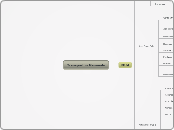Transport in Mammals
Blood
Plasma
Soluble proteins
Fibrinogen
Prothrombin
Antibodies
Help fight diseases
Dissolved mineral salts
Food substances
Glucose
Amino acids
Vitamins
Fats
Excretory products
Urea
Uric acid
Carbon dioxide as hydrogencarbonate ions
Hormones
Insulin
Red Blood Cells
Contain the pigment haemoglobin
Combine reversibly with oxygen
Enable them to transport oxygen from the lungs to all cells in the body
Iron-containing protein
Biconcave in shape
Increase surface area to volume ratio
Thus to allow the cells to absorb and release oxygen at a faster rate
Flattened
Absence of nuclei
Produced by the bone marrow
Lifespan of 3 - 4 months
Destroyed in the spleen
Releasing haemoglobin
Broken down in the liver
Releasing iron which is then stored in the liver
Forming bile pigments
White Blood Cells
Colourless
Absence of haemoglobin
Irregular in shape
Contain nuclei
Mobile
Types
Lymphocytes
Each has a large rounded nucleus
Small amount of non-granular cytoplasm
Produce antibodies which protect that body from diseases
Phagocytes
Each has a lobed nucleus
Granular cytoplasm
Ingest foreign particles such as bacteria
a.k.a. Phagocytosis
Platelets / Thrombocytes
Not true cells
Membrane-bound fragments of cytoplasm from certain bone marrow cells
Involve in clotting of blood
1. Damaged tissues and platelets produce thrombokinase, an active enzyme
2. Prothrombin, an inactive enzyme is then activated by thrombokinase and calcium ions to form thrombin
3. Soluble protein fibrinogen is then converted and catalysed by thrombin to form insoluble fibrin threads
4. Fibrin threads entangle blood cells and the whole mass forms a clot
